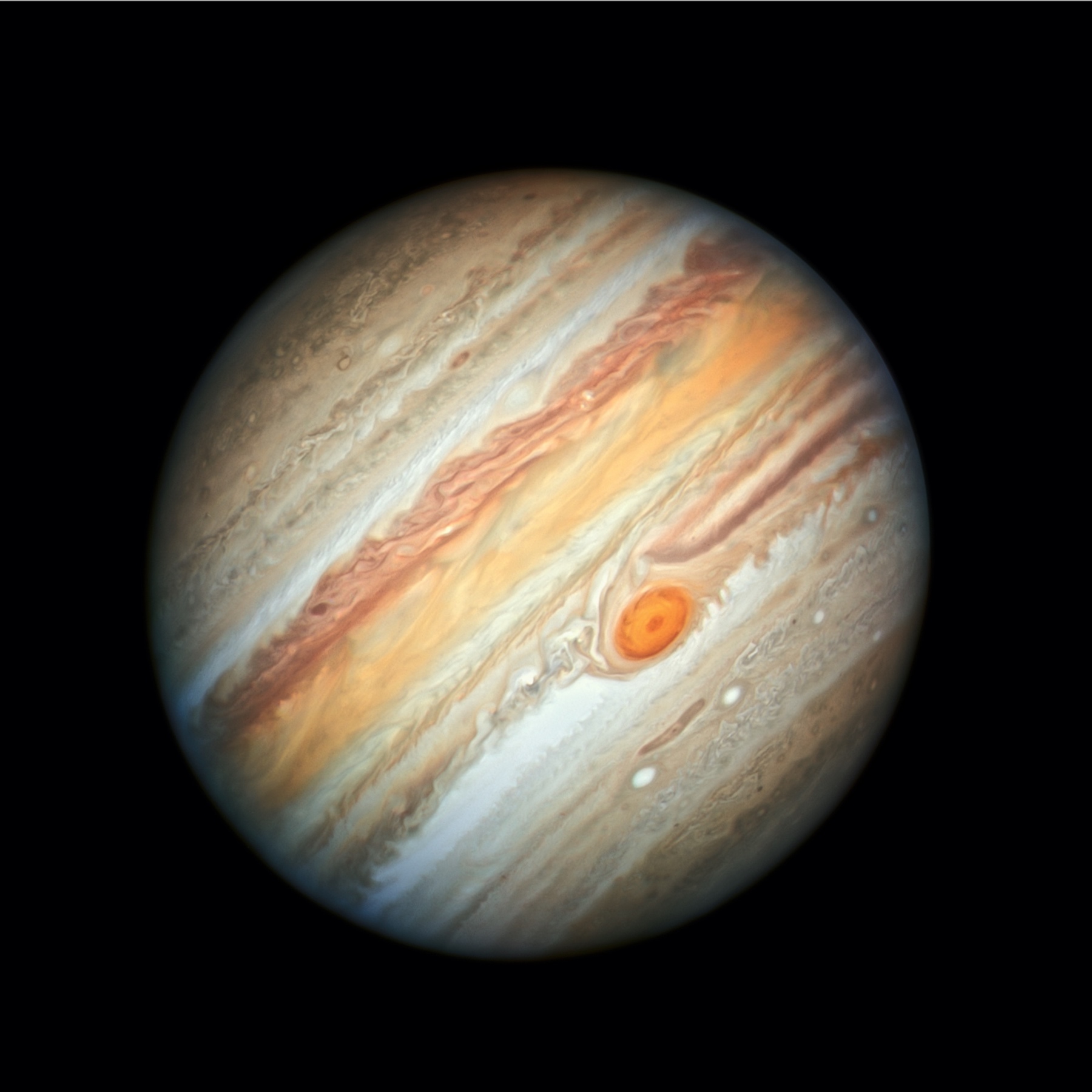Jupiter Book¶
This book contains information about the planet Jupiter - the fifth planet from the sun and the largest planet in the solar system! Fig. 1 below shows an image of Jupiter captured by the Hubble Space Telescope on June 27, 2019.
The Mass of Jupiter¶
We can estimate the mass of Jupiter from the period and size of an object orbiting it. For example, we can use Jupiter’s moon Callisto to estimate it’s mass.
Callisto’s period: \(p_{c}=16.7 days\)
Callisto’s orbit radius: \(r_{c}=1,900,000 km\)
Now, using Kepler’s Law we can work out the mass of Jupiter.
(1)¶\[m_{j} \approx \frac{r_{c}}{p_{c}} \times 7.9 \times 10^{10}\]
(2)¶\[m_{j} \approx 1.9 \times 10^{27} kg\]
Hint
NASA provides a lot more information about the physical characteristics of Jupiter here.
There might even be more planets out there with a similar mass to Jupiter [MQ95][Gui99]!

